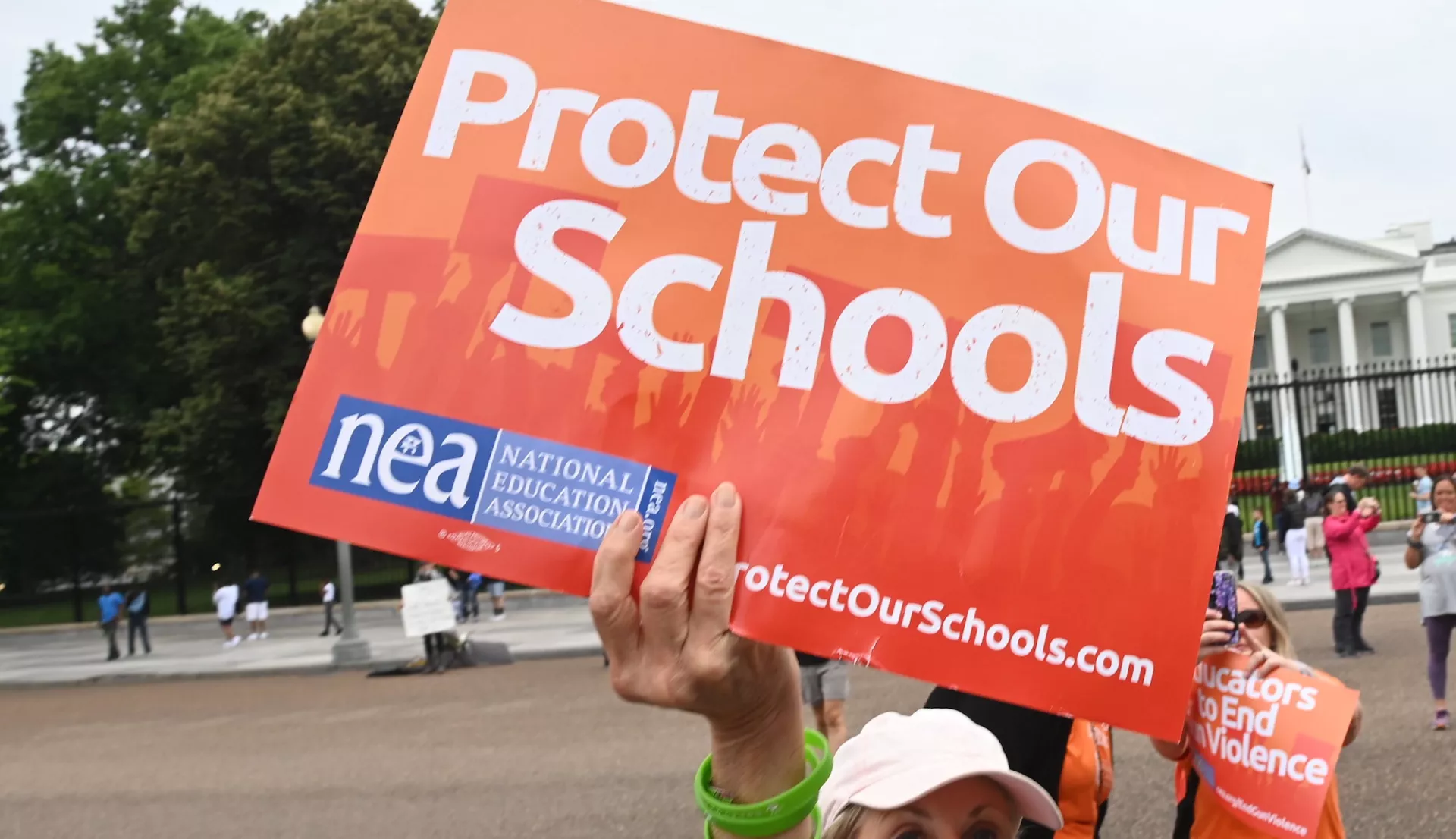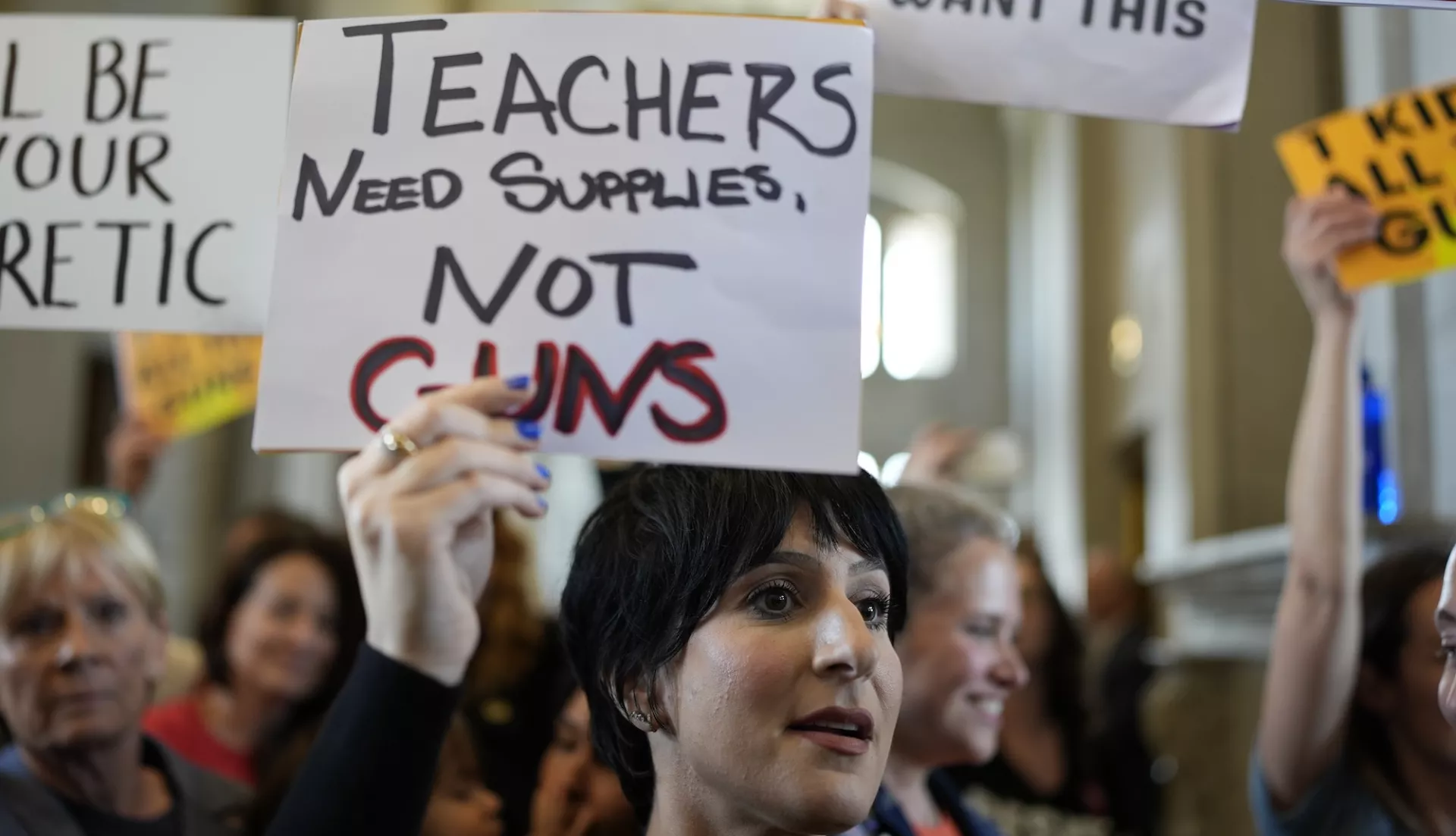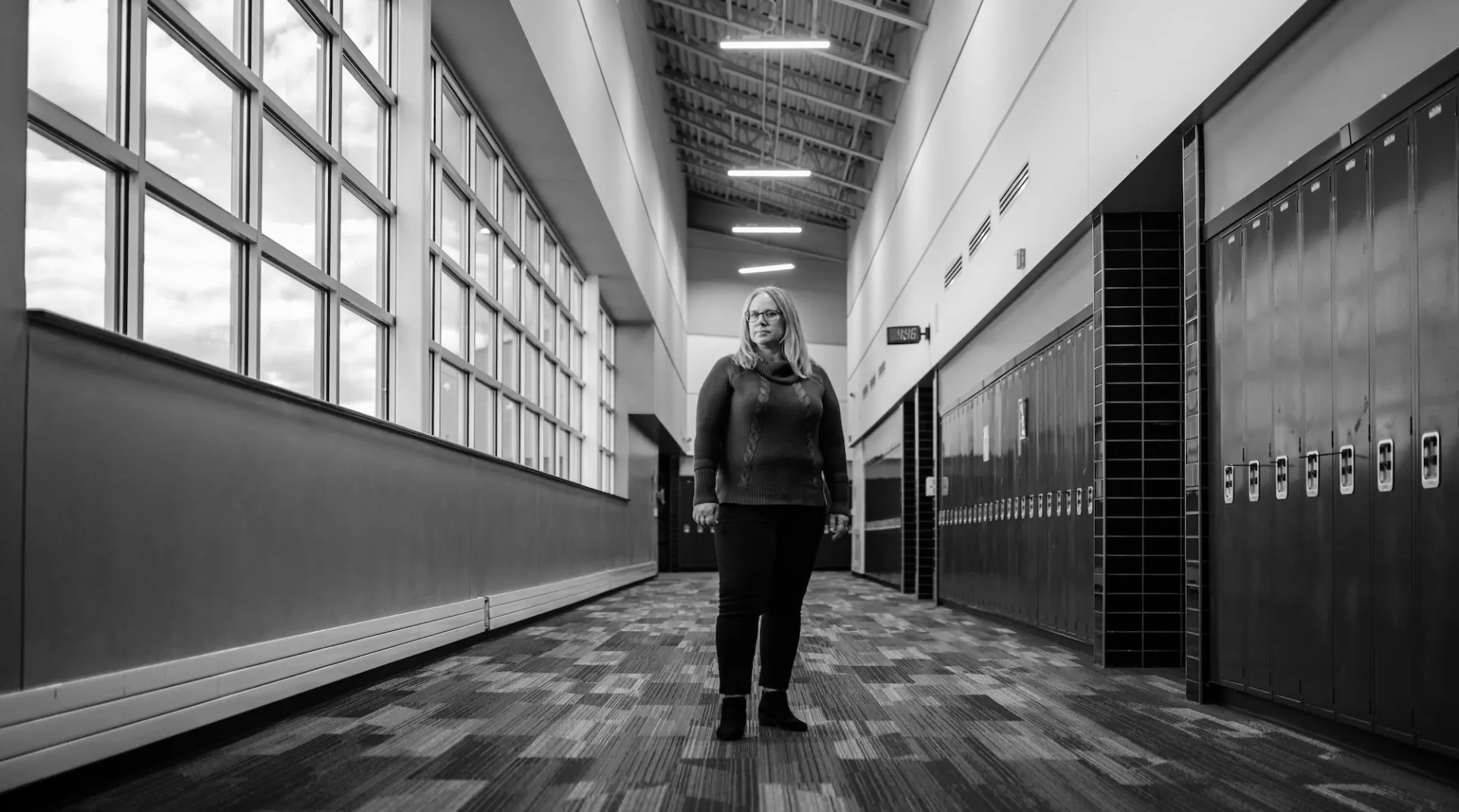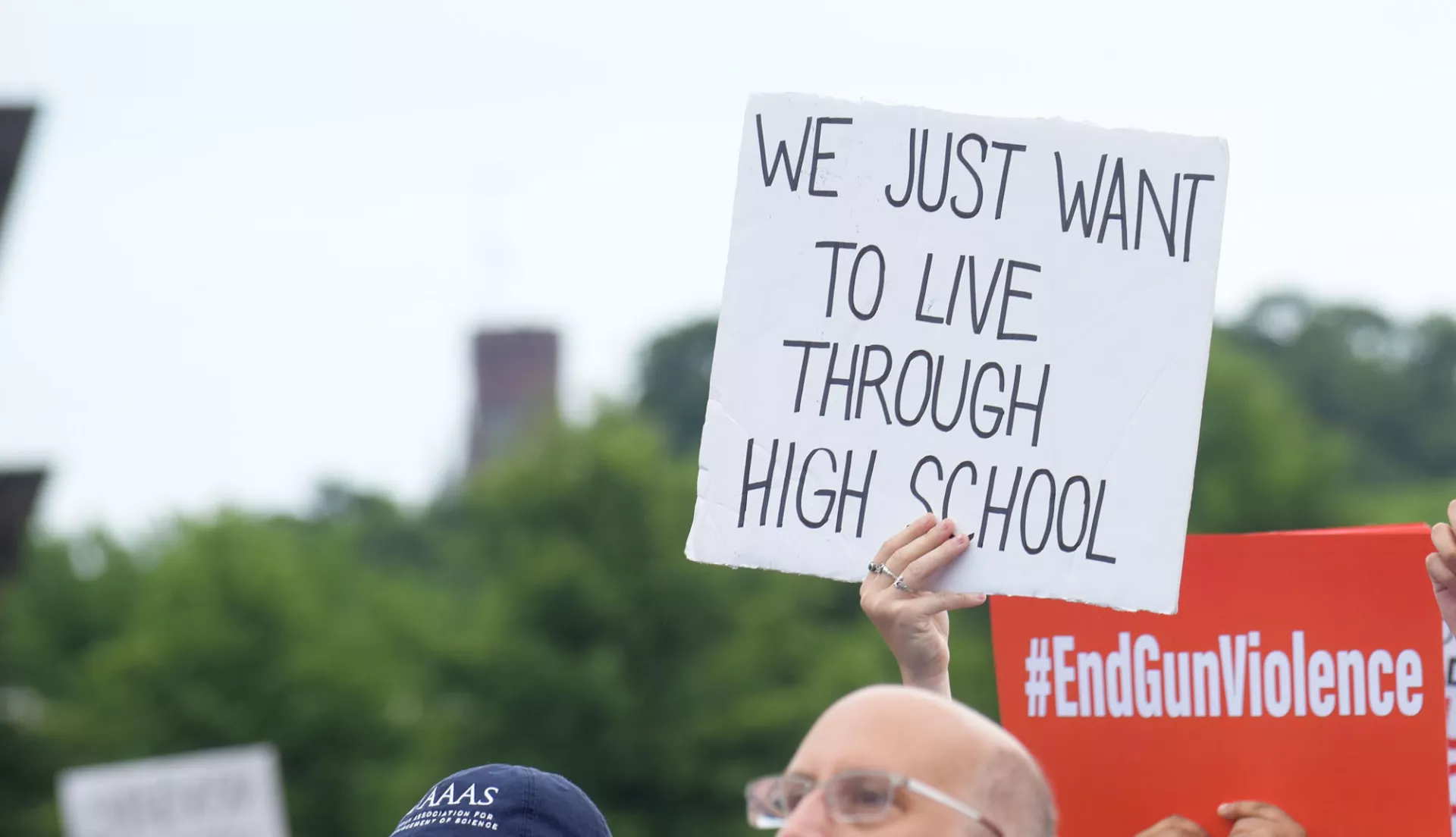Key Takeaways
- Schools should be one of the safest places for students and educators, but active shooters and the threat of violence have shattered that sense of safety for too long and for too many students, educators, and their families.
- In response, the NEA partnered with experts from the Everytown for Gun Safety Support Fund to produce a guide that will help educators and school staff prevent, prepare for, respond to, and facilitate recovery from school gun violence.
Through the end of May 2024, there have already been 107 shootings on school grounds in the U.S., with 29 deaths and 61 injured. These shootings reflect a gun violence crisis increasingly impacting American youth: In 2020, gun violence overtook infectious disease and car accidents as the No. 1 cause of death for U.S. children and teens.
In response to these disturbing realities, the NEA partnered with the Everytown for Gun Safety Support Fund to release the NEA School Gun Violence Prevention and Response Guide.
Released in June, the guide gives educators, elected state and local leaders, and staff and worksite leaders digestible and easy-to-use information “to prevent, prepare for, respond to, and facilitate recovery from gun violence in all education settings.”
NEA delegates at the organization’s 2022 Representative Assembly, alarmed by the national gun violence epidemic, urged NEA leaders “to issue a national call to action to help ensure that all students, educators, schools, campuses, and communities are safe from the epidemic of gun violence.” The guide represents one answer by the NEA – among many – to this “call to action.”
“While we wish this type of guidance wasn’t even necessary, the reality is that we need to step up to not only prevent future instances of gun violence but also equip schools and communities with the knowledge of how to respond when another tragedy occurs,” says NEA President Becky Pringle.
In partnering with the Everytown for Gun Safety Support Fund to produce the guide, NEA enlisted the expertise of researchers from the education, research, and litigation arm of Everytown for Gun Safety, the nation’s largest gun violence prevention organization comprised of more than 10 million members and over 700,000 individual donors.
To assist educators in both preventing and responding to future instances of gun violence, the NEA School Gun Violence Prevention and Response Guide is broken into four sections: “Prevention,” “Preparation,” “Response,” and “Recovery.” Each section presents data and recommended practices that NEA members can use to assist their own efforts in addressing the issue of gun violence in their respective educational settings.
As educators know well, building authentic relationships with students in the first days and weeks of the school year is often the key to preventing issues with classroom management later in the year. This same principle also applies to preventing gun violence. It should come as no surprise, then, that the largest section in the NEA School Gun Violence Prevention and Response Guide focuses on prevention.
Prevention
The “Prevention” section of the guide emphasizes the need to build safe, supportive learning climates for students. It also provides key facts about gun violence, including the importance of understanding ACEs (Adverse Childhood Experiences) and childhood trauma to effectively address gun violence in schools.
The “Prevention” section also includes prevention strategies at both the education setting level and policy level, including advocating for common-sense gun laws. The guide provides examples of effective labor-management collaboration on the gun violence issue, such as the successful advocacy by Racine Educators United in Racine, Wis., for the creation of a joint union-school district School Safety Committee.
The guide as a whole – and the “Prevention” section in particular – also addresses the inordinate impact of gun violence on students of color. As Pringle explains, “While the picture most people have in their minds about schools and guns involves young white male shooters and white victims, the truth is that our students of color are disproportionately affected by gun violence. According to Everytown, “2 in 3 incidents of gunfire on school grounds from 2013 to 2021 occurred in schools where one or more racial and/or ethnic minorities constituted a majority of the student population.”
In each section of the guide, care is also taken to emphasize the harm of overly punitive approaches to gun violence prevention, and the importance of eliminating racial bias in gun violence prevention efforts, so as not to exacerbate the school-to-prison pipeline that pushes Black students out of school at a rate far higher than their peers.
Preparation
The second section of the guide, “Preparation,” focuses on the types of protocols, relationships, and partnerships that should be in place to effectively respond to incidents of gun violence and offers specific logistical advice for making school buildings and grounds more secure and safe from potential incidents of gun violence “while also ensuring conditions remain welcoming and not prisonlike.” Secure entryways and locks and trauma-informed security personnel are key points of emphasis.
The “Preparation” section also urges schools to re-think active shooter drills, emphasizing that they may do more harm (by traumatizing or re-traumatizing students) than good.
Response
The “Response” section of the guide gives concrete strategies to work with students, engage with the media, identify resources for students, educators, and families, and build effective community partnerships after an incident of gun violence.
Recovery
The final section of the guide, “Recovery,” offers useful information about the impact of gun violence trauma and effective long-term recovery strategies from an incident of gun violence.
To optimize usability for NEA members, the NEA School Gun Violence Prevention and Response Guide includes supplemental materials such as checklists and lists of potential organizations to partner with on the state and local levels to address the menace of gun violence together.
Angela Ferrell-Zabala, the executive director of one such organization, Moms Demand Action, recently expressed enthusiasm about the guide’s potential: “This new guide is a powerful tool in our movement, providing schools with the resources they need not only to prevent gun violence but also to heal from the trauma when it does occur.”
In an open letter to members, NEA President Becky Pringle makes the stakes clear: “NEA, we must find a way forward together. We must stop our children – our hope for the future – from continuing to fall prey to this country’s epidemic of gun violence. And we must help the survivors recover and succeed despite their trauma.”





